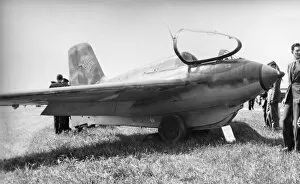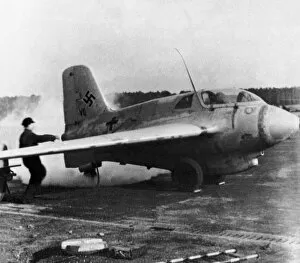Me 163 Collection
The Me 163 Komet: A Revolutionary Rocket-Powered Aircraft The Messerschmitt Me-163, also known as the Komet
All Professionally Made to Order for Quick Shipping
The Me 163 Komet: A Revolutionary Rocket-Powered Aircraft The Messerschmitt Me-163, also known as the Komet, was a groundbreaking rocket-powered aircraft developed by Germany during World War II. With its sleek design and impressive speed capabilities, it quickly became an icon of German engineering. There were several variants of the Me-163, including the Me-163B and Me-163C models. The B model featured a single-seat cockpit and was primarily used for testing purposes. However, it was the C model that truly showcased the potential of this innovative aircraft. Equipped with two seats, the Me-163C allowed for both pilot training and combat missions. It boasted improved performance characteristics compared to its predecessors, thanks to advancements in engine technology and aerodynamics. One of the most remarkable features of the Komet was its rocket propulsion system. Powered by a Walter HWK 509A engine fueled by highly volatile T-Stoff (oxidizer) and C-Stoff (fuel), it could reach incredible speeds exceeding 700 miles per hour – unmatched at that time. Despite its impressive speed capabilities, one significant drawback of this aircraft was its limited fuel capacity. The short flight duration meant that pilots had only minutes to engage enemy targets before having to return to base or land on specially designed skids instead of landing gear. Another challenge faced by pilots flying these advanced machines was their vulnerability during take-off and landing due to their low altitude limitations. This made them susceptible targets for enemy fighters or ground-based anti-aircraft fire. Nevertheless, despite these challenges, the Me 163 proved itself in combat situations when utilized effectively. Its exceptional speed allowed it to intercept Allied bombers swiftly while minimizing exposure time within range of defensive measures. Today, remnants of this extraordinary aircraft can be found in aviation museums worldwide - testaments to an era where technological innovation pushed boundaries beyond imagination.



